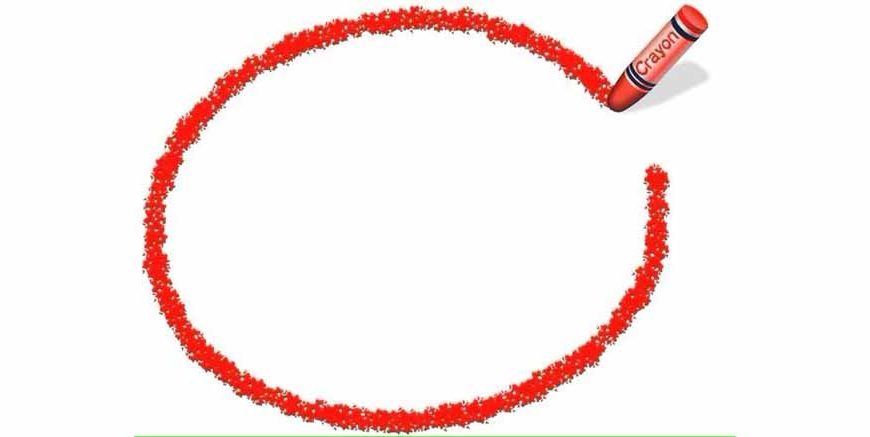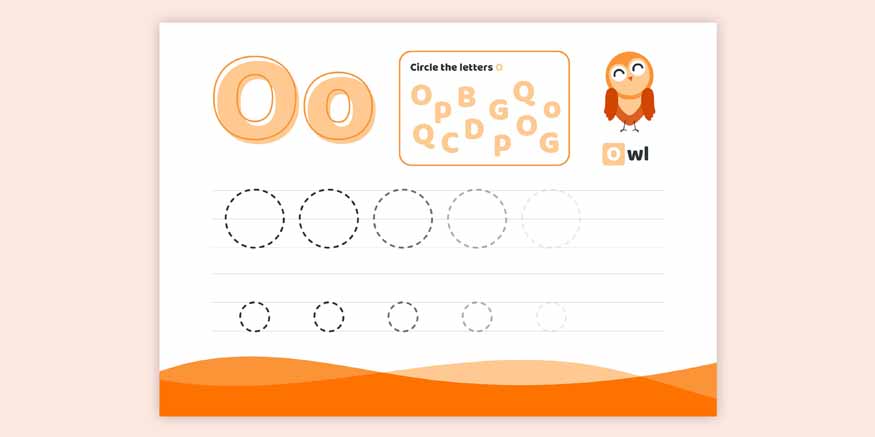
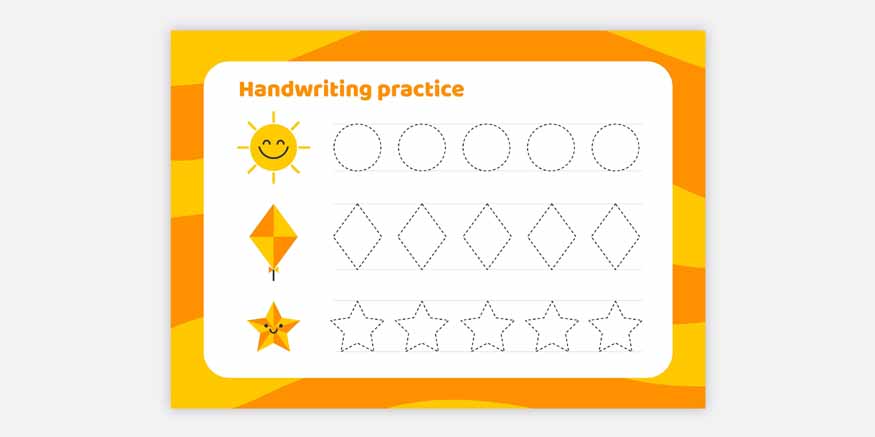
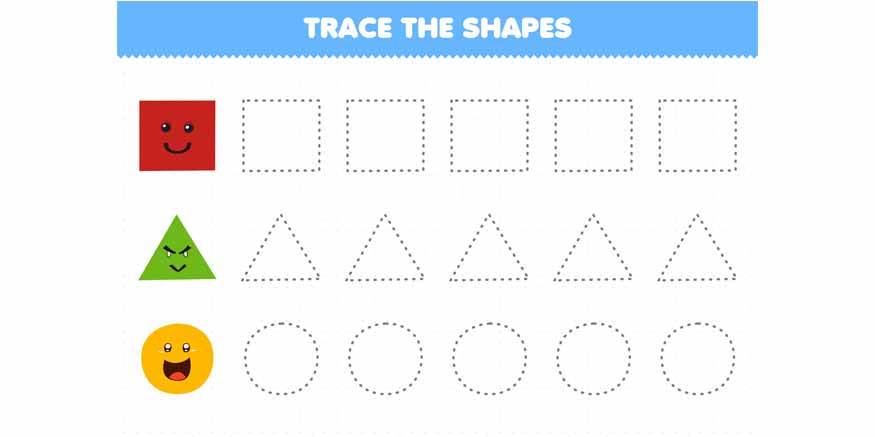
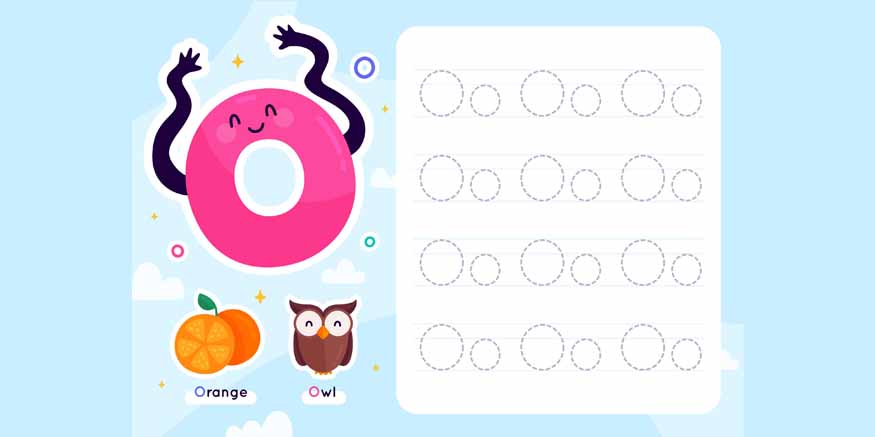
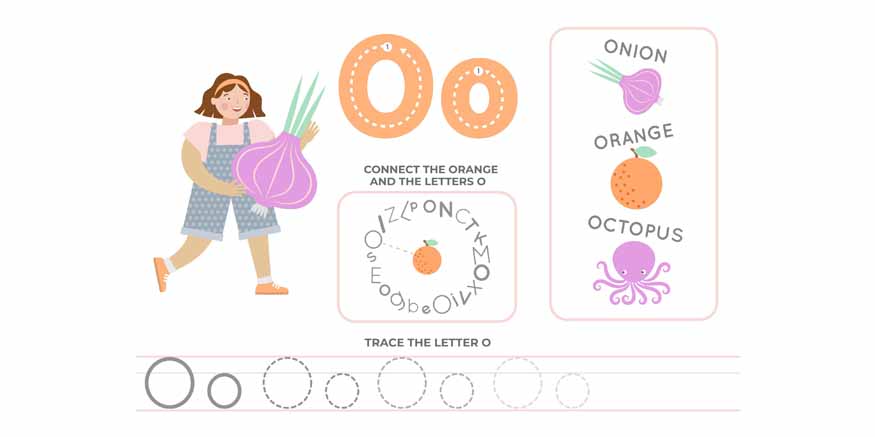
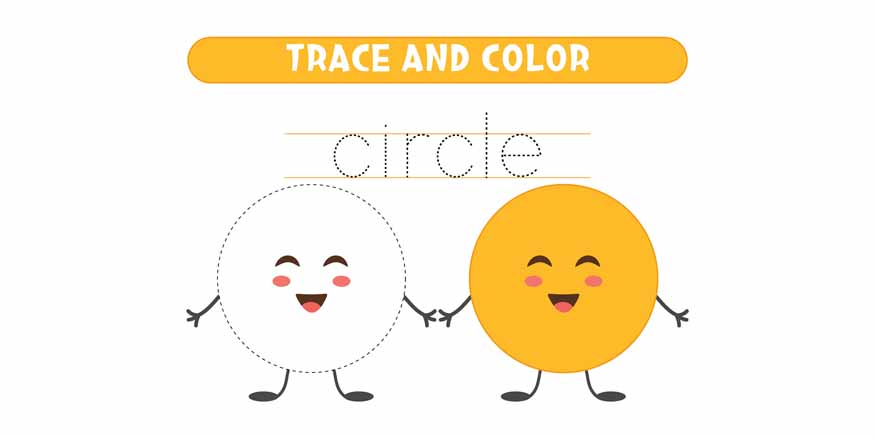
Shapes are an integral part of the early education process, and a circle is one of the first shapes which children get to know and reproduce. Circle worksheets are versatile therefore they can be used to teach children several skills such as fine motor skills, hand-eye coordination, and shapes. Thus, let us consider different types of the circle worksheets and the possibilities that they open for child’s aeration.
Table of Contents:
- Trace the Circle Worksheet
- Circle Letter A Worksheet
- Circle the Fruits Worksheet
- Circle the Insects Worksheet
- Circle the Birds Worksheet
- Benefits of Circle Worksheets
- Tips for Using Circle Worksheets Effectively
Trace the Circle Worksheet:
Drawing circles is an essential initial motor task that enables children to write with their pencils in a linear fashion. These worksheets usually consist of dotted or faint circles of different scales, usually in pencil or crayon that kids are required to trace over. As children draw the lines, they try to make smooth curves and this is a good way to help them in future as writing involves making smooth curves across the paper.
Some trace the circle worksheets may include:
– Circles of different sizes, from small to large
– Incomplete circles that children need to complete
– Spiralling circles that gradually increase in size
– Circles integrated into simple pictures, like balloons or bubbles
To make these worksheets more engaging, consider adding colourful elements or turning the tracing activity into a game. For example, you could create a “connect the circles” worksheet where tracing all the circles reveals a hidden picture.
Circle Letter A Worksheet:
Combining shape recognition with letter formation is an excellent way to reinforce both concepts simultaneously. The circle letter A worksheet focuses on helping children identify and trace the circular parts of the letter A, particularly in its lowercase form.
These worksheets may include:
– Dotted letter A for tracing, emphasizing the circular portion
– Activities where children circle all the letter A’s in a group of letters
– Exercises that involve completing partially drawn letter A’s
– Word searches featuring words that start with A, enclosed in circles
To enhance learning, consider incorporating phonics by including pictures of objects that start with the “a” sound, such as an apple or an ant, and having children circle these images.
Circle the Fruits Worksheet:
The worksheets like circle the fruits enhance fun for the children as well as enhance their skills of visual discrimination while identifying fruits. These worksheets usually consist of a number of pictures of both fruits and other non-fruit objects in which children are supposed to circle only the fruits.
Some variations of this worksheet might include:
– Circling specific fruits (e.g., “Circle all the apples”)
– Counting and circling a certain number of fruits
– Identifying and circling fruits of a particular colour
– Circling fruits that begin with a specific letter
To make these worksheets extremely challenging and exciting for the students, one can include nutrition as a part of these worksheets. For instance, you may assign children with a task of identifying which of the fruits are rich in vitamin C or those with seeds that can be eaten.
Circle the Insects Worksheet:
Like the fruits worksheet, the circle the insects worksheets assist the children to master different insects at both a given number and on sight when drawing circles. Some of these worksheets contain the insects alongside other animals or objects that are not insects and makes the child differentiate between the two.
Some ideas for circle the insects worksheets include:
– Identifying and circling specific insects (e.g., “Circle all the butterflies”)
– Circling insects with certain characteristics (e.g., those with wings)
– Counting and circling a specific number of insects
– Matching circled insects to their names or habitats
To add an educational twist, consider incorporating simple facts about insects on the worksheet. For instance, you could include a brief explanation of why spiders are not insects and ask children not to circle them.
Circle the Birds Worksheet:
Circle the birds worksheets assist children in differentiating a variety of birds, at the same time, the kids also practice on circling. These worksheets are most often filled with different birds alongside other creatures or objects, calling kids to concentrate on the fact that they must circle only the birds.
Some variations of circle the birds worksheets might include:
– Circling specific types of birds (e.g., “Circle all the owls”)
– Identifying and circling birds with certain features (e.g., those with long beaks)
– Counting and circling a certain number of birds
– Matching circled birds to their habitats or diets
To make these worksheets more engaging and educational, consider adding a geography component. For example, you could include birds from different continents and ask children to circle birds native to a specific region.
Benefits of Circle Worksheets:
Circle worksheets offer numerous benefits for children’s cognitive and physical development:
- Fine motor skills: Tracing and drawing circles helps improve hand control and dexterity.
- Hand-eye coordination: Following lines and identifying shapes enhances visual-motor integration.
- Shape recognition: Regular practice with circles aids in shape identification and discrimination.
- Concentration: Completing worksheets helps children focus and follow instructions.
- Pre-writing skills: Circular motions are foundational for letter formation and handwriting.
- Vocabulary expansion: Themed worksheets introduce new words related to fruits, insects, birds, etc.
- Critical thinking: Identifying and categorizing objects develops analytical skills.
- Creativity: Some worksheets allow for colouring and decorating, fostering artistic expression.
Tips for Using Circle Worksheets Effectively:
To maximize the benefits of circle worksheets, consider the following tips:
- Start simple: Before getting to identification phases choose simple tracing tasks.
- Provide variety: It is wise to ensure that you offer different types of circle worksheets so that you do not get bored while at the same time ensure that you offer worksheets that will enable the child to develop different skills.
- Use positive reinforcement: Talk positively about the efforts and the progress of the children to foster learning.
- Make it interactive: When using worksheets, it is beneficial to convert them into games or group activities.
- Incorporate technology: Bring writing on tablets for a more technological approach to the worksheets.
- Connect to real life: Make connections of worksheet activities to the objects and events that one encounters in his or her daily life.
- Encourage self-assessment: Teach children to assess their work and put in mark what they consider as wrong.
In conclusion, circle worksheets are among the vital skills that can help a child in his or her early learning years in a very big way. From simple exercises such as identifying shapes and patterns to advanced problem-solving worksheets for categorization of objects, the kids will benefit from these worksheets. Parents and teachers should therefore ensure a child incorporates circle-based activities in his or her learning as this would go a long way in preparing the child for future learning as well as make learning fun.
For more such interesting blogs, Visit EuroKids





